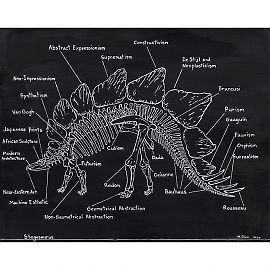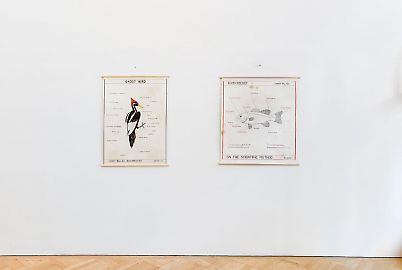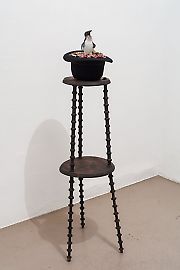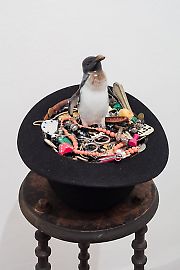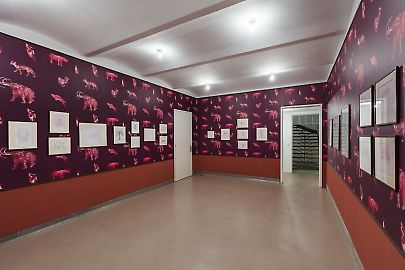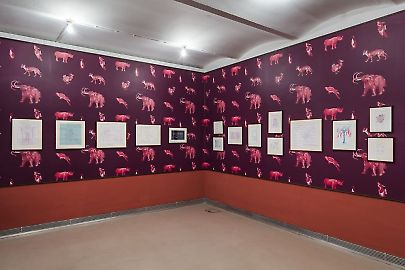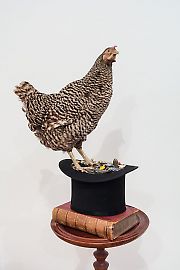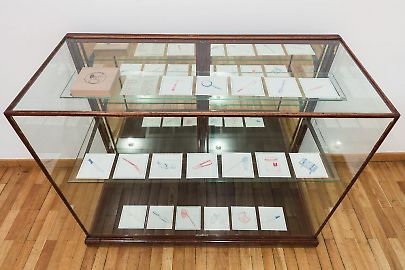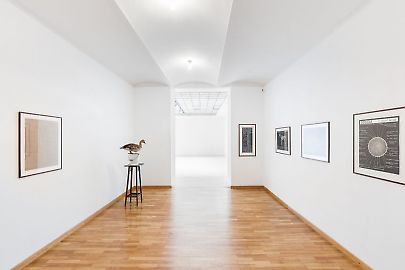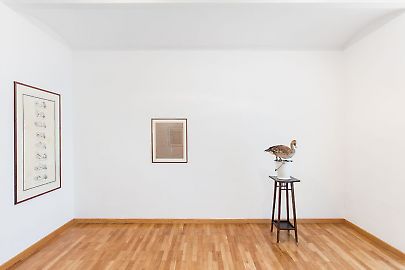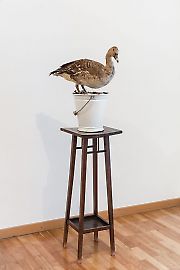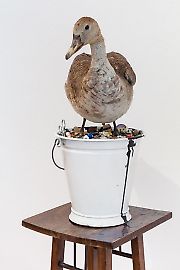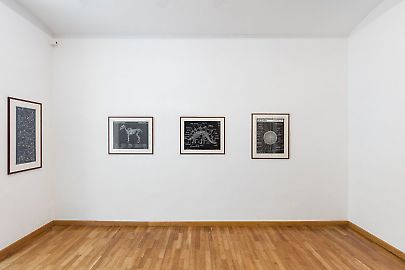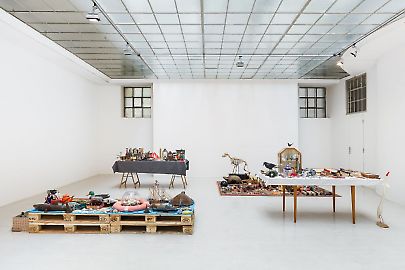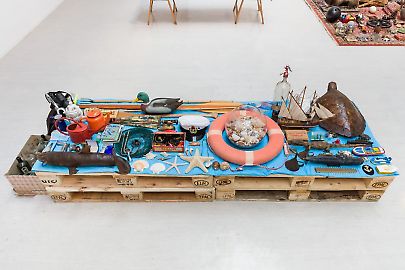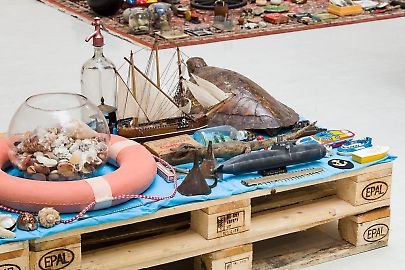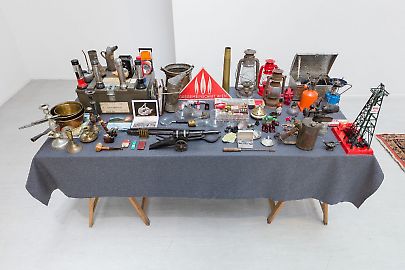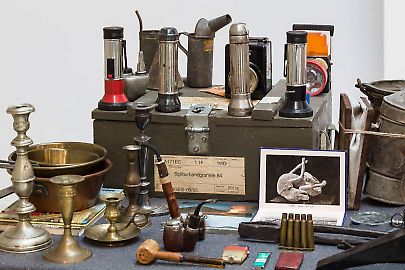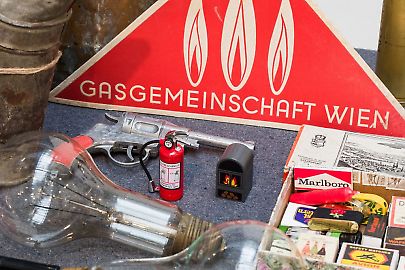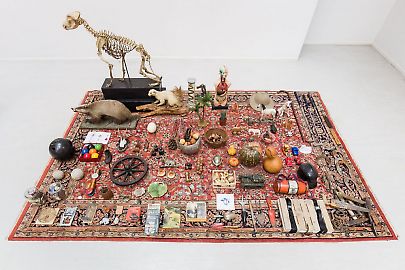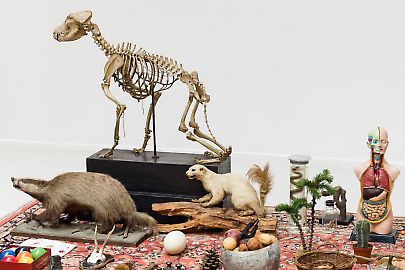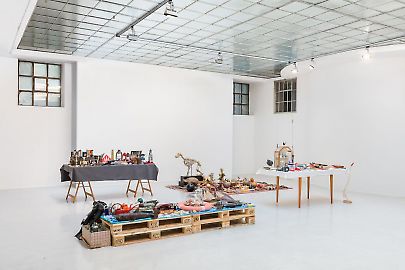Mark Dion -- The Flea Market and other Object Lessons
Mark Dion, Collector in Bowler Hat (detail), 2021 , Hat, ceramic penguin, mixed media 119 x 38 x 38 cm
Mark Dion, Portrait of Madame Collector (detail), 2021, Top hat, stuffed chicken, mixed media, 183 x 46 x 38 cm
Mark Dion, Perilous Adventures: Field Apparatus, 2019, suite of 19 two-color lithographs with screenprinted box
Mark Dion, An Account of the Collector in a White Bucket, 2021, Bucket, stuffed duck, mixed media, 154 x 44 x 50 cm
Mark Dion, An Account of the Collector in a White Bucket (detail), 2021, Bucket, stuffed duck, mixed media, 154 x 44 x 50 cm
Mark Dion, Flea Market (Homage to Georg Kargyl) (detail), 2021, installation, dimensions variable
Mark Dion, Flea Market (Homage to Georg Kargyl) (detail), 2021, installation, dimensions variable
Mark Dion, Flea Market (Homage to Georg Kargyl) (detail), 2021, installation, dimensions variable
Mark Dion, Flea Market (Homage to Georg Kargyl) (detail), 2021, installation, dimensions variable
Mark Dion, Flea Market (Homage to Georg Kargyl) (detail), 2021, installation, dimensions variable
Mark Dion, Flea Market (Homage to Georg Kargyl) (detail), 2021, installation, dimensions variable
Mark Dion, Flea Market (Homage to Georg Kargyl) (detail), 2021, installation, dimensions variable
Mark Dion, Flea Market (Homage to Georg Kargyl) (detail), 2021, installation, dimensions variable
Georg Kargl Fine Arts is proud to present Mark Dion's “The Flea Market and other Object Lessons”, the artist's fifth solo exhibition at our gallery.
Mark Dion belongs to the political artists who pioneered the way we understand nature, the environment and ecology. The appropriation of scientific methods such as field research, organizing, collecting and presenting objects is an essential part of his artistic work, in which he examines the representation of nature in the culture as an indicator of ideological discourse and challenges our perception and common conventions. In his installations, sculptures and drawings Dion illuminates the distinction between “objective” rational scientific methodology and “subjective” irrational influences.
The large-format drawings which are reminiscent of school charts, cover a variety of encyclopaedic topics with an ironic gaze, meticulous attention to details and philosophical sharpness, whereupon the overlap of reality, fiction, art and documentation is constant. Their timeliness contrasts an anachronistic appearance, with contemporary data.
Over the centuries, representation of animals has been continuously adapted to the changes in ideas and attitudes that have had an impact on the destruction of nature and shaping of landscape. Dion’s Sculptures idiosyncratically portray collectors. The graphics cabinet invites you to stay and reflect on the inherent violence in the act of extracting and collecting.
In Vienna, in the early 1990s, Georg Kargl introduced Mark Dion to the complex dynamics of the flea market, the social interactions and the anthropology of things. The flea market, whose name derives from the “Marché aux Puces” in 19th century France, as an alternative socio-economic trading platform for second-hand items or items that are no longer needed, reflects at the same time the history and philosophy of a city and its population. For Dion it is the resource and starting point for his installation “Flea Market (Homage to Georg Kargl)”, which depicts the four elements - earth, water, air and fire. He employs this pre-Enlightenment organization structure harking back to Wunderkammer's allegorical arrangements to explore the disjunctive taxonomies at play on the flea market itself, and perhaps reinvent the still-life tradition. As in a kaleidoscope, the objects spread out over the carpet, the lace fabric, the grey felt and the blue foil. The exhibition space and the flea market merge into a microcosm of a cultural environment.
“The Flea Market and other Object Lessons” gives an insight into Dion's practice, whose formal investigations combine history of science criticism in the awareness of the interdisciplinarity of knowledge and the acquisition of ecological thought in the age of the Anthropocene.


